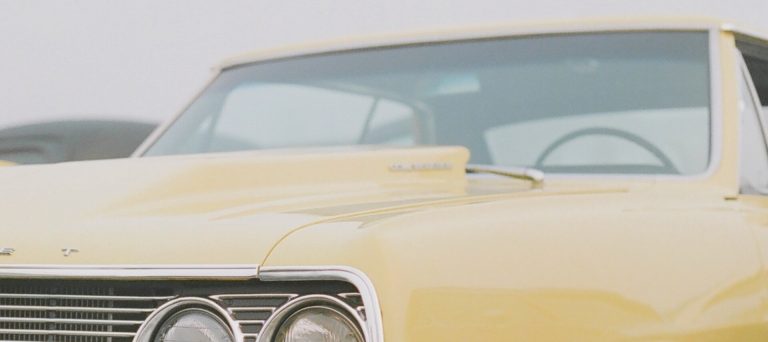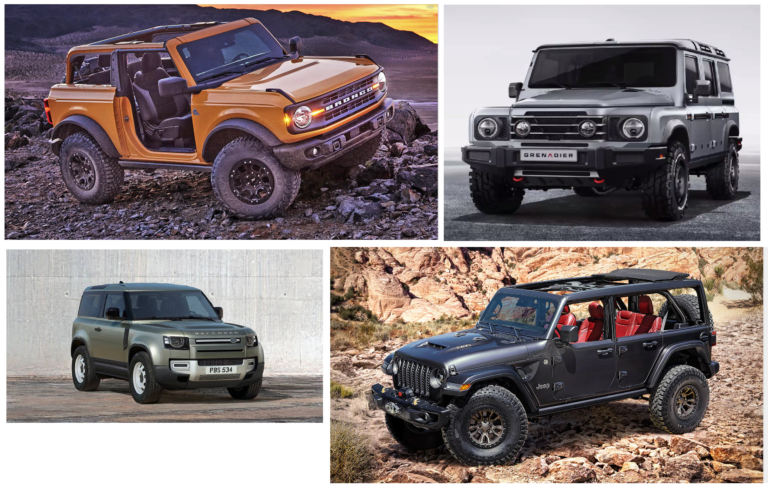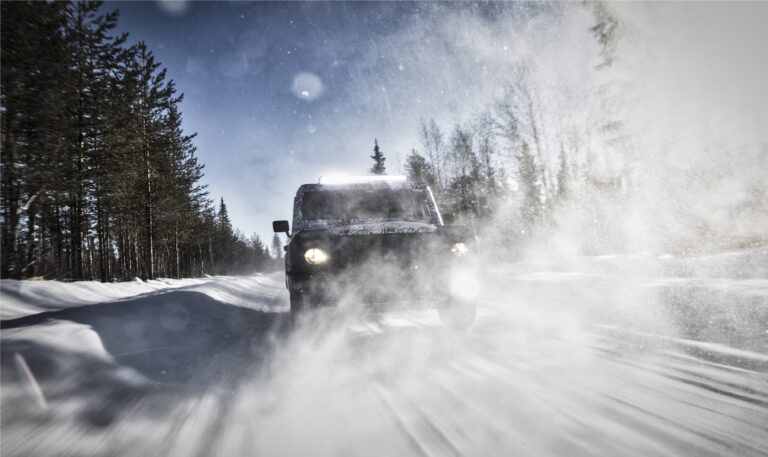The 2017 Chevrolet Trailblazer
What is it?
This is the second time I’m driving a facelifted General Motors (GM)product through dry and somewhat dusty environments in the space of a month.
No, silly, what is the 2017 Chevrolet Trailblazer?
This is yet another response from General Motors to a question that was answered a while back by Japan’s finest, and Ford. It is a rugged, seven-seat SUV complete with selectable 4WD and chunky tyres, which means it is a car that not only ferries families, but can also be used with considerable peace of mind in the clag.
So that means it is essentially a DMAX longroof, a là Everest/Pajero Sport/Fortuner; or what exactly are you saying?
Yes, and no. Yes, because that is what this wagon is intended to be in concept. Its placement in the market lies right in the firing line of the aforementioned vehicles, which are, as stated, 7-seat covered versions of their respective double-cab pickup stablemates.
However, while the Everest, Pajero Sport, Fortuner — and Nissan Pathfinder — are obviously related to their truck versions, the Trailblazer is not immediately recognisable as a covered DMAX. And it actually isn’t. The similarities go only as far as using torquey turbodiesel engines and having a body-on-frame construction are concerned.
The creep sheet
Engine: A 2.8 litre diesel turbo with intercooler that is good for 192hp and 500Nm. Oddly enough, this is a Euro 2 standard engine, which means you should have no qualms about fuelling it with the so-called local diesel, which is allegedly mud. If you do, expect consumption figures of about 12km/l. There is a petrol engine available elsewhere in the world but GM East Africa will not sell it here, so there really is no point in going into that.
Transmission: 6-speed automatic with manual override called Active Select. Again, there is a more manly manual transmission available elsewhere but in the interest of softness, that option has been intentionally overlooked for this market. The autobox comes with something called a Centrifugal Pendulum Absorber (CPA), which reduces noise and vibrations, particularly during shifts. The CPA is located within the transmission and basically acts as a very heavy flywheel to damp shift shocks and transmission vibrations, but unlike a heavy flywheel, this one does not compromise the engine’s ability to gain and lose revs.
The 4WD transfer case (high and low range, 2WD and 4WD, all selectable) allows for shift-on-the-fly ability from 2 High to 4 High at speeds as high as 120km/h, which is mightily impressive.
Steering: It is now gets electric power assistance rather than hydraulic. I was on the verge of throwing a wobbly castigating the new system which has been reputed to suffer from lack of feel in the past but then again, this is an off-road vehicle.
Steering “feel” mostly consists of getting your thumbs dislocated if you hold the wheel wrong when driving over rocks. Electric power steering is your friend. If you are understeering and can’t feel the instance the front tyres lose traction like you do in sports cars, then perhaps you should slow down.
Oh, and that EPAS makes for finger-light tiller-twirling at parking speeds while being reassuringly direct out on the open road. For an SUV, that steering is pretty sharp and accurate with it.
More fancy stuff: Push-to-start is the new must-have accessory on any pretender to whichever automotive throne they are pretending. You’ll find it here too, just like you will in the new DMAX. The party piece is that you can now scare everybody on Halloween by hiding behind a tree and starting the car remotely, in which case they will think of ghosts.
Here is a less ghostly suggestion, though, GM. My car has a timer and it works excellently. Why not fit one as standard to the heavily boosted diesel engine? Extending the engine run time by pressing the lock button twice and then pressing and holding the start button sounds convoluted and like something one is likely to forget. A turbo timer is automatic and self-regulating, depending on the settings; why not just do away with the button-prodding (how long should I hold the start button? How fast should the double-tap on the lock button be for the car to know that I am actually extending the engine run time and not being an indecisive, butter-fingered, manly Trailblazer driver?)
Keeping you upright: In the light of recent discoveries and as a probable follow-up to questions about rollover safety, the Trailblazer is now armed with a raft of electronic driver aids. There is the forward collision alert (FCA)) that lets you know when you are about to flatten whatever is in front of you. It starts with a beep, followed by a warning light in the instrument cluster that goes from green to yellow depending on proximity (measured using a windscreen-mounted camera and an algorithm that uses your current speed to determine how fast you are going to crash). If that distance can be covered in about two-and-a-half seconds, you get to see a head-up display: a bright red light flashes on the bottom right corner of the windscreen. The first time you see it you will undoubtedly think you are hallucinating, and you will ask “What on earth was that?” 2.4 seconds before having your accident.
The accident is preventable by the use of ABS and electronic brake force distribution (EBD). These are now backed up by panic break assist (PBA), which works by calculating how fast you move your foot from the throttle to the brake and how hard you stomp the brake. Once the odds are that you are coming to a panicky halt, full braking efficiency will be applied. You will not be having that accident after all.
Traction control (TCS), electronic stability control (ESC), hill start assist (HSA), hill descent control (HDC), trailer sway control (TSC, not to be confused with TCS), tyre pressure monitoring (TPMS) and anti-rolling protection (ARP) are more of the alphabet soup necessary to keep you from trouble helming this vehicle.
For the really inept driver, or if you are just prone to bad luck, there are side blind zone alerts (manifest as LED symbols on the side mirrors) and rear cross traffic alert will let you know who is behind you when reversing.
Although it remains largely manly, the 2017 Chevy Trailblazer has been given a more pleasant visage and a pretty nice interior, the 2014 vehicle has a better feel.
Straight to the chase: did you like it?
Yes. The blurb did promise ruggedness and manliness, and both are here in large quantities. Disregard the lack of gender sensitivity, and the oxymoron that appears if you read that same blurb in greater detail – the one where they say the facelift car has been “softened” to appeal more to the fairer ones while in the same breath broadcasting its steadfast participation in what is the festival of manliness currently manifest as No-Shave November. It behooves you to be more circumspect as far as belief in PR spiel goes, anyway; but they are right: this car is as manly as opening a beer bottle with your eyelids while spitting raw tobacco out of the side of your mouth.
But it has been softened, as far as external aesthetics go. Its countenance now boasts a more welcoming eye-and-smile collaboration that makes for a comely visage, but that’s it. Every other panel, glass pane, design feature, crease and fold is exactly the same as it was in the 2014 car, which we, incidentally, had with us too for comparative purposes, and also, I suspect, because there were not enough demo vehicles to divide among the throng of highly entitled auto journos who woke up early on a Saturday morning to drive a free car. When they say facelift, they really do mean facelift only.
One could say the interior has been softened as well but semantics aside, I’ll be honest: the new interior is quite good and intuitive to engage, but I think the 2014 car, with its piano black inserts around the centre console, had a better feel. A better stereo too, allegedly (word from my fellow freeloaders), but in retrospect, the instrument cluster in the 2014 model harked back to other GM cars I drove four years ago in Port Elizabeth, South Africa. The 2017 car moves things along: you give some (dials), you take some (console design). This is kind of a 50:50 split between father and son.
Speaking of the interior, it is quite beguiling. At first sight, it is quite natural to let suspicion creep in that the middle row of seats will not be as accommodating as they should, but that is until you share seat space with a more substantially-built colleague. What a surprise! We both fit in it.
“Spread yourself like you are in the boudoir,” I bark harshly.
“That is not very appropriate,” is the retort shot back at me.
“Shut up and do it”
No degree of ludicrousness in whatever absurd lounge-lizard posture you choose to adopt will make you occupy all the available space in the back seats. The car is as roomy as the skulls of those Internet commenters who type in all caps, trashing other people’s opinions just because they differ. There is no differing here: the car can legitimately seat seven and go on a road trip.
One thing, though: this is the second GM car I am driving in a lunar month and this is the second GM car in which I have failed to find the ideal driving position. I did find a position, yes, but I wanted the steering wheel to inch just a touch higher than its preset maximum height. Others didn’t seem to suffer such complications (even with the KB300 in Namibia), which leads me to think that I am probably the one with a problem; after all, my physical structure is unique in that 46 per cent of it comprises my head and neck. It can’t be easy designing a car for someone built like that.
Noise, vibration and harshness are banished to the past.
The suspension, too, has been softened. No, softened is the wrong word here, optimized is more like it. The rough road from Kimana to Amboseli — and within Amboseli — was dealt with summarily with no complaint, even from back-seat passengers, even at speed (somewhat). The car will do well on the bad roads for which it was designed, but what about on tarmac, on which it will have to be more often than not?
Not so good. Not bad, either, but still not so good. There is a hint of bounciness going over speed bumps. Just a hint. The car is prone to crosswind interference; it wanders a lot on the open road, and begins to feel floaty at speeds above 150km/h. Constant steering adjustment on a straight road was a problem I thought was confined only to the Landcruiser Prado but I find it here too, although on a lower scale.
The brakes work well, but that suspension optimization and NVH containment means your spatial awareness is compromised and you might find yourself needing to brake in short order within a very short distance. Then you’ll remember that you are, in fact, not driving a Nissan GTR; you are in an SUV that weighs as much as the showroom you got it from. Cue the sweaty palms.
Would you buy it?
Even more yes. At a hair over Sh5 million, it looks like incredibly good value, especially when we again glance surreptitiously at Toyota and what they have to offer.
Name one GM product that is not good at what it is meant to do. One. I’ll wait.
Any downsides to buying it?
Yes, I can think of one. You will look like you are driving a county government staff car.





